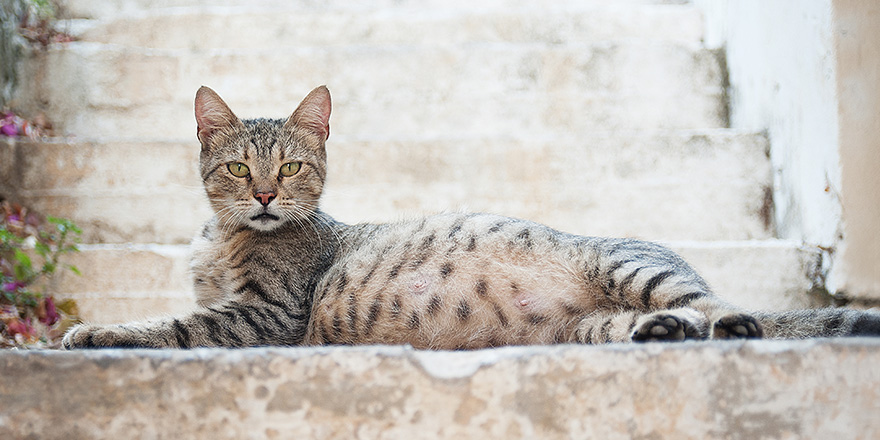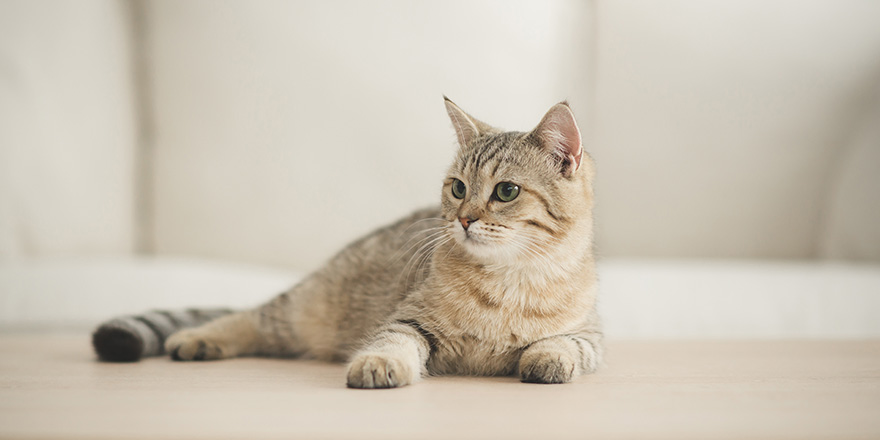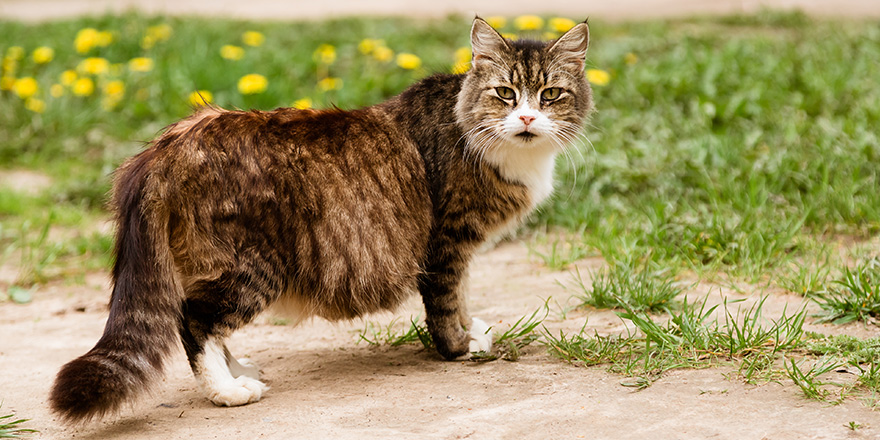When you have a pregnant cat in your home, nothing can really prepare you for every possible scenario that might occur when they’re giving birth. Though the birth might be extremely smooth, we want you to be prepared during your cat’s pregnancy so that you know what to expect on the day your cat appears ready to birth her kittens.
This guide will take you through the process from labor to after-birth, as well as what you’ll need to have on-hand before it all goes down. We also touch on hand-raising a rejected kitten, but we do advise that you seek further information on the subject if you end up with a baby cat that needs solo care for any reason.

Signs of Labor
Near the very end of cat pregnancy, their mammary glands increase in size and they begin exhibiting nesting behaviors. As a cat owner, you need to understand that your cat is going to be giving birth to multiple kittens in an unknown space of time with no help from anyone except you. It’s a lot of pressure, we know, but being as prepared as possible in the lead-up to birth is exactly how you’ll cope with the mother cat and her new behavior.
Be aware that cats have four pairs of mammary glands or nipples. They may look swollen or enlarged.
As well as increased gland size and the need for a good nesting box, your cat’s temperature will fall. They may not feel as warm as usual, but they shouldn’t be freezing cold. If you notice that your cat begins to get lethargic or very sluggish, get them in a cat carrier and to the vet immediately. With a pregnant cat who is showing unusual symptoms, it’s better to be over-cautious than not cautious enough.
Here are several signs to tell you that your cat’s labor has started:
- Howling or chirping
- Decreased appetite
- Grooming excessively
- Lower body temperature
- Restlessness
- Following you around or hiding
- Scratching
Just because the mother cat is in labor doesn’t mean that the kittens will come straight away. Once your pet starts showing the above symptoms, wait for them to settle down on the clean towels or inside whatever private and comfortable cardboard box you’ve set up for her.
For cats having their first litter, the first stage of labor can last up to a day and a half, while experienced mother kitties are likely to get the whole process over within 4 to 16 hours.
Active labor in a cat shows itself as contractions, bloody discharge, and other fluids from the amniotic sacs. We’ll get more into that during the Birth Process section.
Birthing Supplies
A clean towel or three is a given, but what else do you need when your cat is nearing their due date? Pregnancy can be messy and it will make your pet very uncomfortable, even early on in the first stages when they’re just getting ready to give birth.
Ideally, you’ll want the following birthing supplies to make the birthing process easier on you and the mother-to-be:
- A dry towel (plus extras)
- Latex gloves
- Warm water
- Paper towels
- Large cardboard box to use as a birthing box
- Dental floss (used to tie off the umbilical cord)
- Kitten food for when all the kittens are a bit older
- Water and food for the mother cat
- Litter box and fresh cat litter
- Veterinary assistance on standby
You can purchase birthing kits if you’re concerned about your cat or cats going into labor while you don’t have everything ready, but as you can see from the list, you should have most things at home or they should be fairly accessible. Try to have any items brought by the third trimester to avoid the birth sneaking up on you.
The Birth Process
You’ve identified that your cat has gone into labor and is ready to start giving birth. At this point, you need to be at the mother cat’s side until they’re done to help her in case of any complications while all the kittens come out to meet you. Your cat will likely sit herself up, but let her give birth in any position that she feels is most comfortable. For now, you’re just there to watch and help where needed.
The first kitten normally appears within half an hour of your cat starting to strain. There won’t be many other clues to tell you that she’s ready to give birth, which is why it’s so important that you or another responsible adult are nearby. If you have work and cannot take time off, please consider asking a family member or friend with experience to look after your pet and call you when it’s time.
The First Kitten
Kittens are born either head or tail first. Don’t be alarmed either way; stay calm and help your cat if she needs it. Tail-first kittens can take longer to pass through the birth canal.
Between each kitten being born, your pet will take time to lick and feed them. Mother cats should look comfortable between kittens, and will instinctively understand what they need to do when each is born. This includes getting amniotic sacs off of each kitten’s body and dealing with the placenta.
If needed, help mama cat clear the kitten’s face and body of the amniotic sac. This will keep the kitten’s breathing unrestricted, though your pet will do most of the work. If she doesn’t seem to mind your help, go ahead and work on getting the sac clear of the kitten’s body. Pay special attention to their face because the sac can stop kittens from breathing well.
Your pet will cut the umbilical cords herself by chewing through them around one inch away from each kitten’s body. Each kitten should have one placenta, and you need to make sure that you have them all because they can cause issues if they’re still inside the mother cat. You can help by tying off the umbilical cord with dental floss so she has time to chew through it.
The most important thing to do when kittens are born is to make sure their air passages are clear.
It takes around 4 to 16 hours for all kittens to be born, with each passing through the birth canal every 10 to 60 minutes. Expect the placenta of each kitten to be passed within 15 minutes of that kitten being born.

Problems During Labor
Let’s troubleshoot your cat giving birth:
Your Cat is Straining, But no Kittens Have Been Born Within 30 Minutes.
Contact your vet urgently and let them know that your cat has been in active labor but seems to be having trouble giving birth. They may ask you to bring her in. If your cat is crying out in pain, that’s another warning that there’s an issue. The kitten could be stuck.
There is Green Discharge Coming from Your Cat’s Vulva.
A kitten could be in distress and their blood and oxygen supply is failing. Contact your vet, because you may need to pull that kitten out yourself and take the cat in for the rest of their labor. A few drops of blood are normal when kittens are coming through the birth canal, but green discharge is a warning.
The Kittens’ Umbilical Cords Wrapped Around Them.
This can happen. Tie off the umbilical corn, pinch the corn around an inch from the tie, and separate it. This will allow you to remove the rest without harming the kitten.
A Kitten is Making Choking or Gurgling Sounds.
There may be fluid in your kitten’s lungs. Hold the kitten between your hands, placing your fingertips on their head as if you were cradling them in a sling. Swing the kitten in a light, downwards motion to help use fluids out from their lungs. Wipe their face with a paper towel or gauze pad if you have one to hand.
After Giving Birth, Your Cat is Experiencing Unusual Vaginal Discharge or Bleeding.
It’s possible that your cat strained too much during her labor and has pushed their uterus out of place. Call your vet.
Mother Cat is Disinterested in Her Kittens.
Stroke your pet a few times to transfer her scent onto your hands and then lightly rub the kittens. She may not recognize them as hers if they don’t have her scent on them. If this doesn’t work, look into hand-rearing the kittens because it’s possible mama won’t look after them.
Stillborn Kittens
Unfortunately, it isn’t unusual for an entire litter not to make it. In larger litters, one to two newborn cats may be stillborn. Remove them from the area immediately so that mama cat can keep birthing without stressing herself out. If you have another person with you, see if they can revive the kitten by rubbing it with a dry towel to warm it up and getting the fluids out from its lungs in the way suggested in the troubleshoot for “A kitten is making choking or gurgling sounds.”
Not all stillborn kittens will remain dead. If the kitten is fully developed, there’s a chance to save them and it’s worth spending a few minutes trying before giving upon them. Be aware that an underdeveloped kitten may not have the best quality of life and could have a lot of medical issues before passing away anyway. As their owner, it’s a decision that you need to make, no one can make it for you.
When to Go to the Vet Immediately
- The mother cat has been straining for 30 minutes but there’s no sign of any kittens.
- There’s yellow-green or green discharge, indicating a problem with the next kitten.
- Bright green discharge, which could hint at placental separation.
- Bloody discharge, which could be a placental rupture.
- Your pet is bleeding very heavily.
- Your cat is extremely lethargic and doesn’t have the energy to give birth.
- There’s a foul odor combined with frequent bleeding.
- Your cat won’t nurse or is sick.
Any of these are good reasons to seek veterinary care. Trust us when we say that your local vet has seen every panicked owner of a pregnant cat under the sun and they’re more than experienced enough to deal with any kitty you bring in.
What to Do After Your Cat Gives Birth
Keep a careful eye after the pregnancy has come to an end. After kittens are born, both your cat and her kittens will be in a vulnerable state. A cat who just gave birth is going to be hungry, thirsty, and very tired, but they know they still need to feed their babies and keep them all safe. As cute as they are, try to avoid interrupting them too much when checking on them.
Check on the newborns and the mother frequently, but otherwise, allow them to stay in the birthing box in a quiet area of your home. If your cat doesn’t feel relaxed, she may not be able to bond with her babies.

Caring for Newborn Kittens
Newborn kittens feed every couple of hours. Though the mother cat will usually do this herself, there may come a time when you need to hand-rear a kitten. This can happen if the mother is too poorly to do it herself, has rejected the kitten, or the kitten is very weak and unable to get food by nursing.
Despite any of this, you should still care for the kitten around the rest of their littermates so that they can bond with their brothers and sisters and learn from them. It’s also possible that the mother will recover and start nursing again or that she may later accept the kitten after being exposed to them and scenting them.
Your hand-reared kitten needs a warm environment, clean bedding, and more attention. It’s like looking after a baby, but the kitten is an even smaller being.
Some of the major problems that occur in hand-rearing are starvation, dehydration, and chilling. Inexperienced owners need to do as much research as possible to be sure that they can effectively rear the kitten. If you don’t think you can, contact a local cat organization and see if they can help – some may be willing to collect the kitten you surrender and do the hand-rearing themselves.
You’re unlikely to get your kitten back if you do this because you’re essentially giving them up for adoption. But that shouldn’t stop you if you don’t think you can handle hand-rearing. Weigh up the options and think about what’s best for the kitten.
- To hand-rear a kitten, you’ll need a quality kitten milk replacer, lots of warm blankets and towels, and time.
- Newborn kittens will move around when they’re hungry because they’re looking for their mother to nurse. You should feed them at this time. They need to be fed up to 10 times in each 24-hour period.
- You need to keep the kitten with you all day, every day. Kittens can die quickly, and if they miss a feed, they just go back to sleep. That’s a problem because they aren’t getting the nutrients that they need.
- Direct body contact is the best kind of warmth, but you can also lay your kitten on a covered hot water bottle. Be sure that it’s covered well! Extreme temperatures can be fatal.
Note: The contents of the www.mypetneedsthat.com website, such as text, graphics, images, and other material contained on this site (“Content”) are for informational purposes only.
The Content is not intended to be a substitute for professional veterinarian advice, diagnosis, or treatment.
Always seek the advice of your veterinarian with any questions you may have regarding the medical condition of your pet.
Never disregard professional advice or delay in seeking it because of something you have read on this website.
FAQs:
First, check out our troubleshooting guide in the Birth Process section above. Depending on what trouble your cat is having, the best choice of action may be to call your local vet and get your cat over there. Severe issues include green or excessive bloody discharge, a no-show kitten after 30 minutes, a lethargic mother cat, or an unpassed placenta. All of these problems require veterinary care that you won't be able to give your cat.
As strange as it may be to hear it, a cat pregnancy isn't that much different from a human pregnancy. They share a lot of the same signs of being pregnant. From a pregnant cat you can expect morning sickness, changes in appetite, behavioral changes, signs of nesting, and an eventual rounding to their stomach. Signs won't appear until your cat is a few weeks pregnant.
A pregnant cat will stay in the gestation period for between 58 and 67 days. That's approximately 2 months or 8 to 9 weeks. Your cat has the potential to birth anywhere from one to 12 kittens, though the average is usually 3 or 4 for a first litter.







